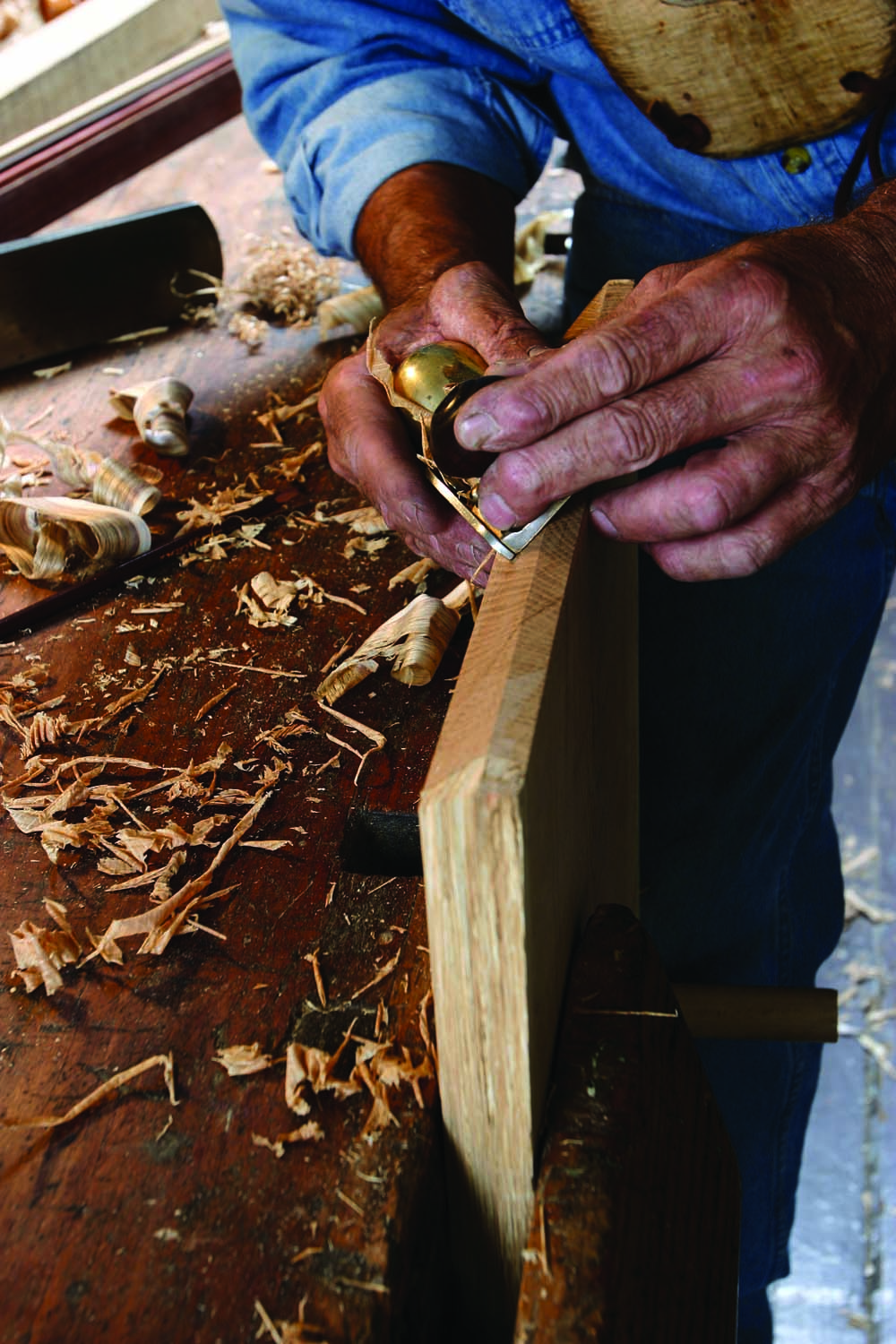We may receive a commission when you use our affiliate links. However, this does not impact our recommendations.

Editor’s note: this article originally appeared in the December 2010 issue of Popular Woodworking
When I was a professional woodworker, I experienced a satisfying fascination looking at my hands at the end of the day. As a full-time cabinetmaker, I thought about them as I made specialty cuts on the saw, my fingers gliding within a hairsbreadth of the hungry blade. At the end of each shift, I was, of course, relieved that they were still there, that some stupid oversight of fundamental safety on my part hadn’t compromised them.
Though I was always glad they were intact, it was the appearance of my hands that appealed to me. They looked worn and used, like a good woodworker’s hands should. Skin-like strips of dried glue leprously peeled from the tips of my fingers. Dark crusty islands of wood putty decorated my digits. Cracked, dry and calloused, these were the hands of someone who knew how to get the job done, who knew that a meticulous eye and talented hands could produce something truly exciting from a rough-hewn length of wood. I felt my hands were more impressive than other tools found in the shop.
It is years later now and my hands aren’t too impressive any more. My years outside the shop have softened their grip somewhat. The callous that once protected my thumb as I checked the jointed edge of a freshly milled piece has disappeared. The cracks around my nails – that would sting when fresh putty closed over them – have long since healed, leaving soft skin on my fingertips. Indeed, cleaning up my scrap pile the other day, simply stacking offcuts into an organized pile, my soft paws were left slivered with no less than four different species of wood. The only abuses my fingers now suffer are an occasional neglect of lotion. I was shocked at how pampered they had become.
I’d attempted to organize my pile of scrap wood on a whim. Despite the fact that it had been years since I built anything, I’d been unable to part with the loose pieces of oak, ash, alder and maple that had accumulated in the garage. As any woodworker knows, even the smallest of scraps still maintain promising potential. But the forgotten and cluttered pieces were an eyesore that needed attention.
As I stacked them neatly under the workbench, I looked fondly on the various species, each distinct in character and feel. And that feel is what brought me back – the softness inherent in the alder, the density of the hickory, the graininess of the rift-sawn oak. Simply put, I enjoyed the feel of the wood in my hands once again, so many years after I left the shop. And with the feel, of course, came the slivers.
Yet a flood of long-forgotten memories came back as well. The way I learned that touch was as important as sight in determining the quality of finish sanding. Or the way my fingertips could check the delicacy of a mitered corner. Or how I found out, the hard way, that the edge of melamine is comparable to a razor knife. An excitement born of nostalgia began as I stared at those chunks of wood. Instead of the cleaning I had planned for that Saturday afternoon, my garage instead became a dusty shop once again. The saws came out, the compressor grunted and coughed, and the router screamed away five years of neglect. A fantastic little alder cabinet was the result.
Of course, as I might have expected, my hands didn’t fare too well. But aside from several slivers, and a few cuts and scrapes, they didn’t suffer too much, either. All in all, it felt pretty good to once again put them to work, to employ the greatest tool in the shop – despite the fact that they were a little rusty.
Here are some supplies and tools we find essential in our everyday work around the shop. We may receive a commission from sales referred by our links; however, we have carefully selected these products for their usefulness and quality.








